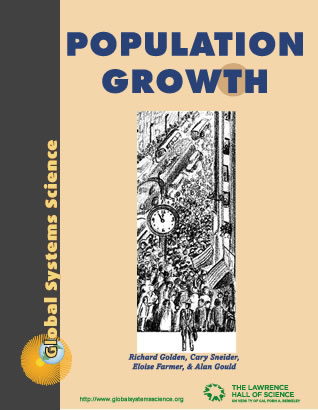Population Growth

POPULATION GROWTH addresses a fundamental problem: even if we can change our habits to use only clean and efficient sources of energy such as solar, wind, and water power, global environmental problems will continue to worsen if the world’s population continues to grow at the present rate. See Overview.
Contents
Overview
As of November 16, 2022 there were 8 billion people on Earth, with the population increasing by over 180,000 every day. (For current population information, see http://www.worldometers.info/world-population/). Since it is difficult to see the effects of population growth, students are asked to think about quality of their own lives as a starting point, and to recognize how satisfying their needs requires Earth’s resources. Conditions in countries such as China and India illuminate what may happen if the human population continues to grow as rapidly as it is today. Through mathematical investigations, students learn about factors that contribute to the rate of population growth, and the idea of carrying capacity, relating an ecosystem to populations it can sustain. The cultural and religious dimensions of efforts to curb population growth are sensitively discussed. Students are encouraged to form their own opinions about what can and should be done by individuals and by governments to control the growth of the global human population.

